The Russian private healthcare services market

The beginning of the modern private chargeable medical services market in post-Communist Russia is generally linked to the early 1990s, when the explosion of the Soviet Union opened up the road to capitalism that liberated many free-market activities that were hitherto suppressed under the official administratively planned socialist economy. These changes prompted an unprecedented growth in private entrepreneurial activities, including the provision of pay-per-use medical and other healthcare services.
Since then, the rapidly growing private healthcare services market has carved out a sizeable niche for itself, as it has become a good or even a better alternative to some well-funded and highly-equipped state hospitals that usually cater for the top ‘nomenclatural’ staffs of government agencies.
The industry today
However, it needs to be clarified here that this report is dedicated to all forms of healthcare services provided within the ‘pay-per-use concept,’ irrespective of who is actually footing the final costs — individuals from their own wallets or employers and the government through granting generous bonuses or as part of wages or subsidization or even free insurance policies. Consequently, the main consumers of private medical services are individuals or companies/government employees, who have the means to afford these services, but do not have free access to the elite government hospitals, and bankroll these services either from their own wallets or through medical insurance policies — both obligatory and voluntary formats — and also as bonuses from their employers.
Thanks to the different payment formats, the industry is in state of active growth, evident in the number of new private clinics being opened in different fields, expansion of services as well as the rising number of local and foreign investors entering the industry. For instance, AFK Sistema announced in 2007 that it plans to invest approximately $100mln. per year in the development of its healthcare services division under the Medsi Companies Group Holding (MCGH), which includes Medsi I Clinic, Medsi-II Clinic, the American Hospital Group, which operates the American Medical Centers (AMC) brand, MedExpress, a chain of private healthcare facilities including 23 clinics in Moscow and other regions and an ambulance service. “We intend to provide high quality medical services to clients, and to provide 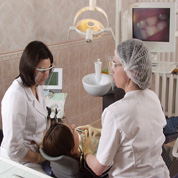 treatment for a wide range of medical conditions and healthcare concerns,” MCGH CEO Vladimir Gurdus said. Similarly, insurance giant Ingosstrakh plans to create a network of medical facilities that will provide medical services to holders of voluntary health insurance (VHI) policies. Specifically, it plans to open 24 clinics at the cost of over $100mln, each of which will be able to serve 20,000-23,000 patients annually. “Our goal is to become the leader in the VHI sector,” Ingosstrakh CEO Alexander Grigoriev said. “The ownership of private clinics will enable us to control the quality, cost, volumes and duration of medical care as well as optimize the insurance premiums.”
treatment for a wide range of medical conditions and healthcare concerns,” MCGH CEO Vladimir Gurdus said. Similarly, insurance giant Ingosstrakh plans to create a network of medical facilities that will provide medical services to holders of voluntary health insurance (VHI) policies. Specifically, it plans to open 24 clinics at the cost of over $100mln, each of which will be able to serve 20,000-23,000 patients annually. “Our goal is to become the leader in the VHI sector,” Ingosstrakh CEO Alexander Grigoriev said. “The ownership of private clinics will enable us to control the quality, cost, volumes and duration of medical care as well as optimize the insurance premiums.”
According to various reports, the annual growth rate since 1998, when the financial meltdown decapitated the economy and put the whole nation on the brink of sovereign bankruptcy, has been robust, averaging between 25-40%, depending on the segment, location and other traditional macro- and microeconomic trends in the country. This impressive growth has been attributed to the steady rise in the number of Russians preferring private medical services to those offered by the state hospitals known for their lack of required equipment, low level of services and rampant bribery, etc. Thus, according to the Health Ministry, the growth in the number of Russians using private medical services in 2007 was 18-20%, while the forecasts for the coming years, equally impressive, are expected at 12-15%. In Moscow, this rate is expected to be higher, at 20-30% per annum.
And, given the current Russian population estimated at about 142.5mln, and making allowances for about one-third, or 40mln people, living below the subsistence levels, according to official statistics, and other categories of citizens, who cannot afford private medical services, this official rate means an annual increase of about 5mln-8mln new clients nationwide. Besides, according to a poll conducted in 2007 by the Public Opinion Survey, about 42% of 1,500 respondents said they used private healthcare services. Notably, about 74% said they made their payments officially, while the rest called their payments “unofficial.” Also, 85% of respondents in Moscow named high-level quality of services as the main deciding factor for using private medical services, and 57% named speed and efficiency, while 54% listed lack of easy access to free-medical services as their reasons. Similar results were also obtained by Step by Step, a market research agency, and AMC.
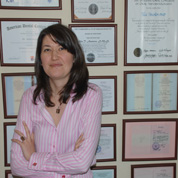 Alla Anastos, dental director, U.S. Dental Care “Personally, I have been opportune to meet and work with the best dentists in the world, those who wrote all the books on dentistry and are well-known throughout the industry.”
Alla Anastos, dental director, U.S. Dental Care “Personally, I have been opportune to meet and work with the best dentists in the world, those who wrote all the books on dentistry and are well-known throughout the industry.”
Commenting on these prevailing positive growth trends, Alla Anastos, director, U.S. Dental Care, Moscow, noted that the local private medical services industry in general, and its dental segment in particular, have changed tremendously since her clinic was opened in Moscow about 15 years ago, when it was just one of the very few foreign dental clinics in the capital3. “Today, the private healthcare services market is expanding rapidly, as private clinics are sprouting all over the city and country like mushrooms after rains. Now, there are lots of Russian clinics of a pretty good level, judging from the way they look and the level of equipment,” she added. “However, I’m must say that I cannot judge the types of specialists or the types of services offered in these clinics.” Similarly, Marie Rouzeaud, manager of International SOS Clinic in Moscow, has also attributed the positive dynamics to the overall improvement in Russia’s investment climate, which is bringing more foreign corporations into the country. “In light of this positive investment climate, more foreign businesses are entering the Russian market, bringing along more expatriate employees requiring Western standard medical care,” she said. “At the same time, with the growth of Russians’ dispensable incomes, we are also observing a strong demand from the local residents for higher standards of medical care.”
Market size and growth perspectives
Despite this robust growth, there are, however, no accurate figures on the real size of the industry, with estimates varying widely between $6bln and $15bln. Thus, according to Discovery Research Group, a market research agency, the official volume in 2006 totaled $10bln, while the size of the ‘shadow’ market — the ‘politically correct euphemism’ for all unofficial entrepreneurial activities, including grafts — was $3.7bln, thus putting the gross turnover at $13.7bln. Similarly, according to Step by Step, the official market turnover in 2006 was $5.3bln, while the “shadow” segment was conservatively estimated at least at $1bln, thus putting the total market size for that year at $6.3bln. Another study put the size of the market at $7.3bln, with the Moscow segment accounting for 35%, or $1.9bln, of this figure. However, most experts have noted a significant decline in the ‘shadow’ segment, from over 30% in 2004 to less 20% in 2006.
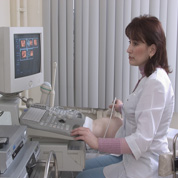 Region-wise, Moscow, as usual, leads the industry, both in revenue, number of clinics, key players, major investors and other key market indices. Thus, the volume of the Moscow market in 2006 was R54bln, thanks to the increasing use of VHI policies, which is growing at 10-20% per year. The shadow segment was R7bln. Similarly, in St. Petersburg, the nation’s second largest city, there are over private 1,000 clinics/hospitals, according to the city’s Medical Chamber’s data. In the other regions, the turnovers are smaller, though still very high, by regional economic standards. For instance, the volume of the market in the Chelyabinsk Region, seen as a typical prototype for most Russian regions, totaled R3bln in 2007, an increase of 20-25% over 2006, and is also expected to have a similar growth rate in 2008. According to the experts’ data, up 30% of Chelyabinsk Region’s residents now make use of private healthcare services fueled by the over 20% increase per annum in clients’ flow.
Region-wise, Moscow, as usual, leads the industry, both in revenue, number of clinics, key players, major investors and other key market indices. Thus, the volume of the Moscow market in 2006 was R54bln, thanks to the increasing use of VHI policies, which is growing at 10-20% per year. The shadow segment was R7bln. Similarly, in St. Petersburg, the nation’s second largest city, there are over private 1,000 clinics/hospitals, according to the city’s Medical Chamber’s data. In the other regions, the turnovers are smaller, though still very high, by regional economic standards. For instance, the volume of the market in the Chelyabinsk Region, seen as a typical prototype for most Russian regions, totaled R3bln in 2007, an increase of 20-25% over 2006, and is also expected to have a similar growth rate in 2008. According to the experts’ data, up 30% of Chelyabinsk Region’s residents now make use of private healthcare services fueled by the over 20% increase per annum in clients’ flow.
The higher market growth rates in large regional centers have been attributed to the higher standards of living and salary levels, particularly in Moscow and St. Petersburg, and also to the generally higher level of demand for healthcare services in these cities because of their larger populations. Segment-wise, dental care is the fastest growing service, as it eclipses all other healthcare services, and is followed by gynecological, obstetrical services and urological services. In some regions, these services account for the lion’s share of the market, with dentistry leading the pack.
Industry’s clientele
According to various expert findings, the gender factor is playing one of the key roles in the pay-per-use healthcare sector both in terms of segregating patients by sexes and also in terms of their readiness to pay for these services, where women are currently in the lead. “Gender-wise, female clients are more willing to pay the top ruble for the highest quality services,” according to excerpts from the experts’ report.
Generally, the typical “consumers” of private healthcare services are middle- and upper-class citizens, aged 25-45 years, who are capable of footing the traditionally high expenditures. Most prefer to have all these services in one spot, thus preferring the multi-profile clinics to highly specialized medical centers, which offer mostly single or highly limited number of services. Thus, stressing the importance of providing comprehensive medical services, International SOS’ Rouzeaud noted that International SOS is not a stand alone clinic, but a part of one of the biggest global medical assistance companies. “We do not only provide Western standard level of medical care in Moscow, but also have the facilities to evacuate our patients to other countries and organize medical treatment abroad,” she added. “The vast majority of our clients are employees of multinational corporations from various industrial sectors. We have confidence that these corporations will be our main clients, but we are also putting a lot of efforts in attracting Russian corporate clients.”
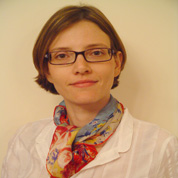 Marie Rouzeaud, manager, International SOS Clinic “A professional team of expatriate and Russian family doctors and nurses provides all our patients with the medical care they deserve.”
Marie Rouzeaud, manager, International SOS Clinic “A professional team of expatriate and Russian family doctors and nurses provides all our patients with the medical care they deserve.”
Similarly, Anastos also noted the comprehensiveness of the services offered at her dental clinic, saying the treatment program is not just to ‘drill and fill,’ but to draw up a comprehensive plan that envisages full diagnosis, including the use of x-rays and other advanced dental equipment, most of which have yet to arrive on the Russian dental market. “In essence, we do not just only provide dental, but full medical care to all patients. And, when necessary, we fly in leading specialists in dentistry from the United States and Canada, etc., to handle certain complicated cases.” Talking about patient flows, Anastos says the clinic’s clientele is split roughly 50:50, meaning 50% of the patients are expatriates, and the other 50% are Russians. “We have lots of corporate clients, insurance policy holders and cash patients, the latter being mainly from the middle and upper classes,” she added. “In terms of revenues, the larger part comes from the Russian clients, because most expatriates take more care of their teeth, go more frequently for routine dental check-ups and cleanings, and mostly only come for treatment during emergencies. Most of the really complicated cases usually come from the Russian patients.”
Private healthcare clinics vis-a-vis state hospitals
According to Step by Step and other experts’ studies, the majority of clients, wishing to pay for their healthcare services, contrary to expectations, still prefer government-affiliated hospitals to private clinics. Also, most of these clients prefer private Russian clinics to foreign ones because of the latter’s higher costs. When, however, talking about the elite clients, the trend is the exact opposite, as most prefer foreign clinics in Russia, especially the Western-branded ones or those affiliated with them, while the wealthiest of this clientele often neglect all local clinics in the country, as they traditionally prefer to have all their healthcare services in the most exclusive medical facilities abroad.
Therefore, these studies have shown that the main competitors to private healthcare centers are well-staffed and equipped state hospitals, which, apart from obligatory free medical services, are also allowed to offer chargeable services on the same premises — a trend that is largely decried as ‘unhealthy’ as some doctors discriminate against non-paying patients, thus fueling more corruption in these clinics. Thus, according to Indem and other experts, healthcare is the second most bribery-prone public sector, after education, where solicited bribes and other illicit payments run into billions of rubles every year. Whilst acknowledging the existence of bribery in government hospitals, Andrei Seltsovsky, director of the Moscow City’s Healthcare Department, however, noted that “bribes do not influence the quality of treatment in state-owned medical 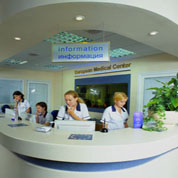 facilities.”
facilities.”
However, thanks to the low official salaries, estimated at about 70-80% of the average salaries in other industries, the absence of and/or low rents, availability of state-owned medical facilities, government clinics are able to offer relatively lower fees for the same services than those offered by the private clinics. This enables state hospitals to control the lion’s share of the low-price segment, while private clinics control a larger share of the elite clientele segment, though there are exceptions to this ‘subjective’ delineation. However, this division makes the middle-price segment the ‘main battle field’ between the public and private sectors in terms of expansion of businesses, market-share consolidation, etc. “In Moscow and other parts of the country, we can identify a few good medical centers,” Rouzeaud noted. “Competition among clinics is always present, and this is very good, as we perceive it as a catalyst for the further development of the Russian healthcare system.”
Growth-limiting factors
A major limiting factor, according to experts and research reports, has continued to remain the mainstream clients’ vestigial Soviet-era mentality, which sees healthcare as a socially vital service that should be provided absolutely free-of-charge and/or seriously subsidized by the state, or at the least, if is to be bankrolled by patients themselves, should not be “financially exerting on the them.” Experts say it will take a long time to change this wrong mentality.
But apart from this mentality issues, other key factors limiting the development of private medical services include inflation, which has continued to decimate the citizens’ dispensable incomes, and consequently, reduce their demand. Others include the ‘shadow’ economy, poor legislative base, unfair competition, which places the private clinics in a more disadvantageous position vis-a-vis the well-equipped and staffed state hospitals, which, in addition, also have free or highly subsidized accesses to government social infrastructures, communal utilities, etc. Consequently, state hospitals, as already noted above, are able to offer lower prices for the same services offered by the private clinics, thus effectively ‘pricing out,’ which have to pay prevailing market rates for rents, utility and phone bills and higher salaries to staffs. There is also the problem of lack of sufficient number of qualified medical personnel throughout the industry, despite the fact thousands of universities are ‘churning out’ thousands of medical doctors and other healthcare personnel every year.
Bright future perspectives
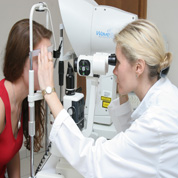 These negative trends notwithstanding, most CEOs of private clinics and other experts contacted for this report, are, however, very upbeat about the future of the Russian private healthcare industry and their roles in boosting development and competition on the market through the provision of alternative, world-standard medical services to those, who can afford them. For instance, Alexander Goncharuk, president and CEO Sistema, which intends to create a chain of 100 clinics across Russia by 2011 that will provide a full range of services encompassing preventive treatment, diagnostics and clinical treatment, has called the paid-for healthcare services sector one of the key areas for growth of his company. “The healthcare market has considerable growth opportunities and we intend to become a leading player in this fast developing market place.”
These negative trends notwithstanding, most CEOs of private clinics and other experts contacted for this report, are, however, very upbeat about the future of the Russian private healthcare industry and their roles in boosting development and competition on the market through the provision of alternative, world-standard medical services to those, who can afford them. For instance, Alexander Goncharuk, president and CEO Sistema, which intends to create a chain of 100 clinics across Russia by 2011 that will provide a full range of services encompassing preventive treatment, diagnostics and clinical treatment, has called the paid-for healthcare services sector one of the key areas for growth of his company. “The healthcare market has considerable growth opportunities and we intend to become a leading player in this fast developing market place.”
Other key players in the private sector are equally optimistic, saying the industry fundamentals are in their favor. Specifically, they believe the continuous existence of the weakest points in state hospitals, notably the snaillike pace in attending to patients, staff’s uncultured attitude towards clients, low quality services borne out of low-salaried public workers’ lack of motivation, and finally, a limited scope of officially allowed services that can be provided free-of-charge, will enable private clinics that are mostly clients-oriented in their policies, well-equipped and staffed with higher-earning medical personnel, who are thus more motivated to cater better for their clients and patients to drastically reduce the near-absolute hegemony of the state hospitals in the Russian healthcare services industry in the non-too-distant future.








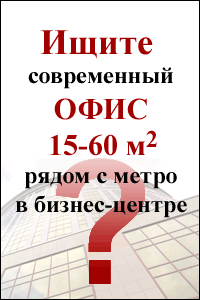



 Web design,
Web design,